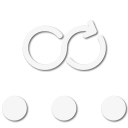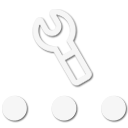I'm going to partially agree here with everyone and throw some numbers in myself. When people do the math on things like this, no one seems to bring up the tolerances (spec) the manufactures have. Speedo calibration was something I had to do at the dealership when we were able to calibrate them. This is mechanical speedos to early electronic. Before GPS I had to check speedos using mile markers. Most manufactures had a 3mph tolerance. Some manufactures have a 4mph. On the ones I calibrated, I could get .5 or better. From then until now we have to throw in ABS/traction control, fuel metering, trans shifting and crash prevention. Checking calibration now, I'm surprised if I see something as far out as .5mph with proper inflation and new tires.
Now we have modern. The software is designed to allow a pretty broad spec still. The main reason is, it doesn't matter what the side of the tire says, you can have the same size tires from diffrent manufactures be diffrent heights and widths. This can be as much as half an inch. Add in normal tolerance and you have two similar vehicles reading two diffrent speeds. We see this all the time with people arguing what tire is a "true" 33". Take the smaller of the two tires, wear it down and you have an inch difference at proper inflation.
Grab a tape measure and go measure section width on tires and look at what's advertised. That alone throws tire calculators out the window and should only be used for getting an idea not precision. All of this measuring/calculating are things I make my students do in lab.
If you want to really make your computers unhappy, have diffrent tire sizes at the same time. I've had ABS flag codes for diffrent brands of tire, on the same vehicle, with the same numbers. That means at 70mph, they were more than 3mph diffrent. Grab a scan tool, hit 70mph and look at the individual tire speeds your computer sees. Don't be surprised if you have 1mph difference or more on the same tires. ABS/Traction control has around a 5-7mph spec. This is not only due diffrent tire sizes but high speed corners. When you go around a corner, the outer tires go farther than the inner. You can have this system pretty far out of spec and still have no noticeable difference.
That aside, trans shifting wont be noticeably effected until you get away from the tolerance. Modern computers have a learning curve and will retune to a degree. Drive line load from the heavier/taller tire and RPM will make more difference here even if you recalibrate the speedo.
Crash detection not only uses speed but sonar/radar/Lidar to determine how fast your catching up the the vehicle in front of you. Again, more tolerances. Different brands of tires, compounds and weather conditions means it has to learn on the fly.
What does all this mean? Most people running around don't have accurate speedos. Tire manufacture, tread design and inflation make this true. If we go to larger tires, we should have our speedos close for speed and mileage as well as keeping it in the computers tolerance. Too far off and yes the computers wont work properly. If you run the math over 100k mileage you see a huge difference in what your odo shows and what you actually are.








